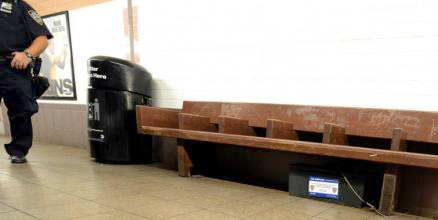Only a test: Gas released into NYC subways on Tuesday
Part of largest anti-terror study ever in city

On your way to work Tuesday, you may have drifted through a cloud of a harmless perfluorocarbon gas, part of a gigantic anti-terror study carried out by Brookhaven National Laboratory with the NYPD.
The study, called the “largest urban airflow study ever,” is meant to follow the trail of airborne chemical, biological and radiological weapons throughout the city. Low concentrations of the “tracer” gas were released for a 30-minute period at subway and street locations south of 59th Street in Manhattan, and then tracked as it made its way across the five boroughs.
Roughly 200 breadbox-sized sampling devices have been stashed throughout the subway system at 21 stations and on street light poles throughout the city. Some devices were also hand-carried by researchers.
